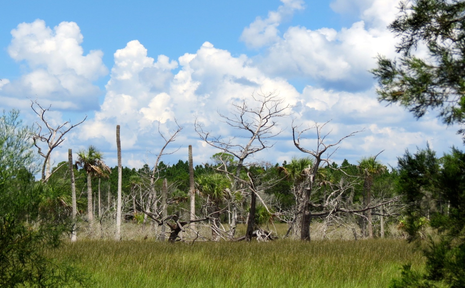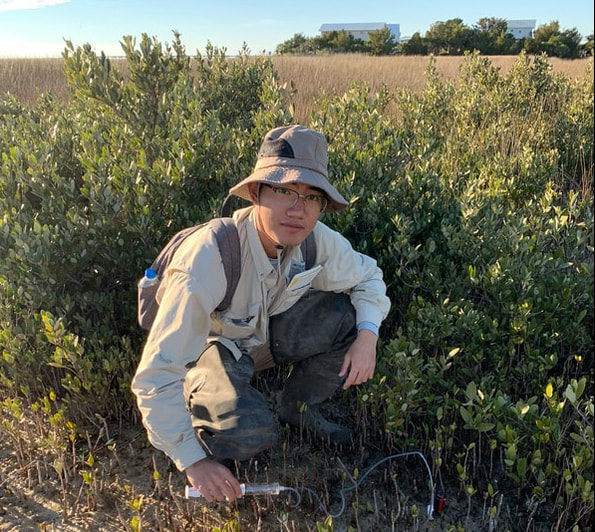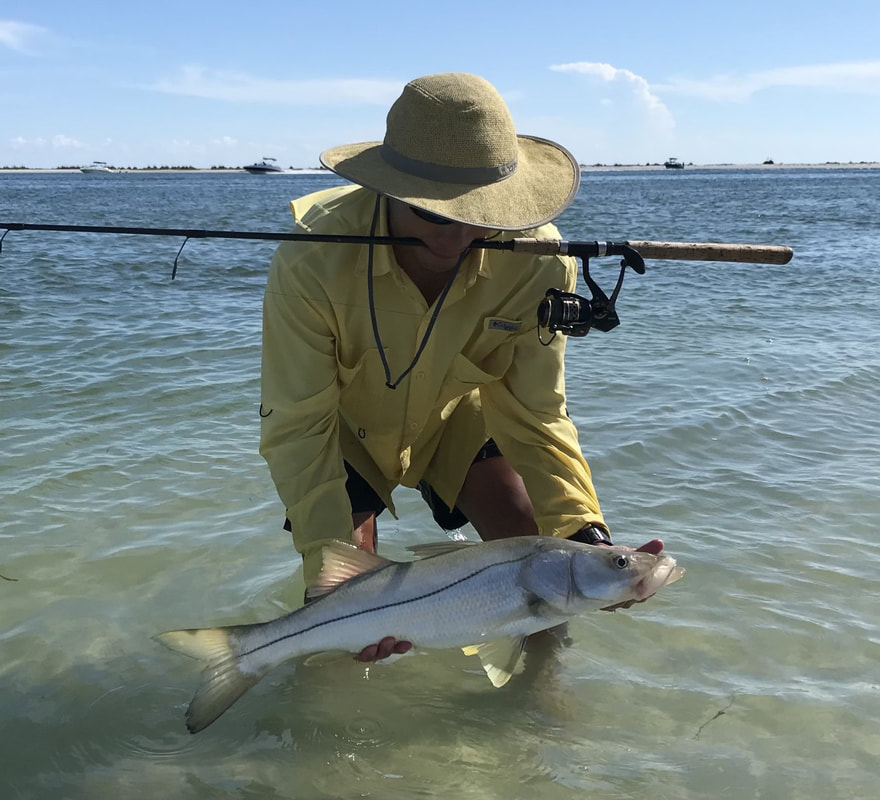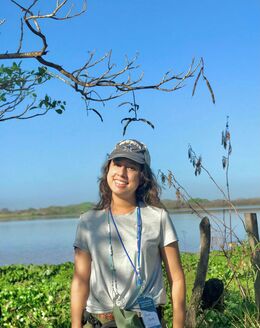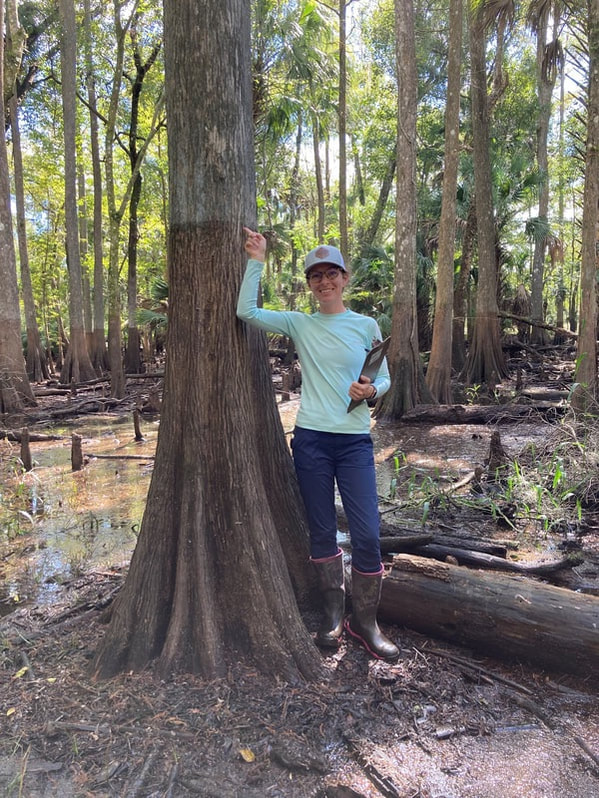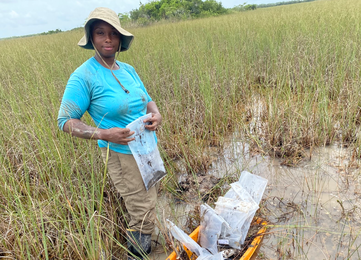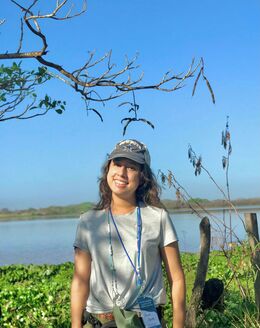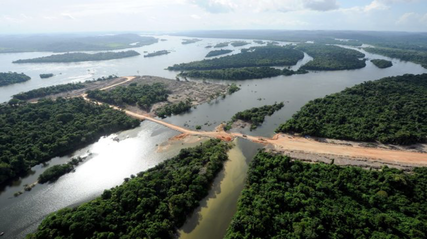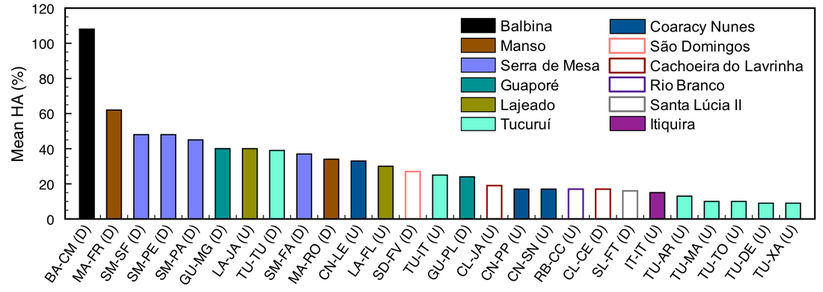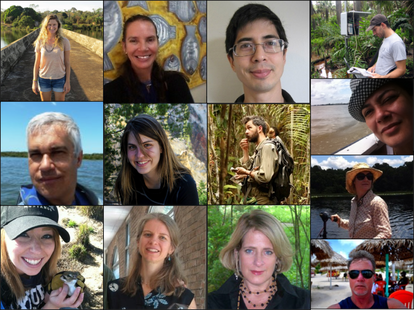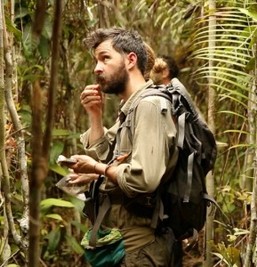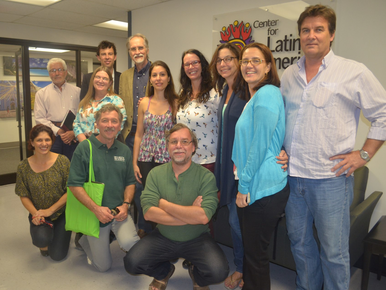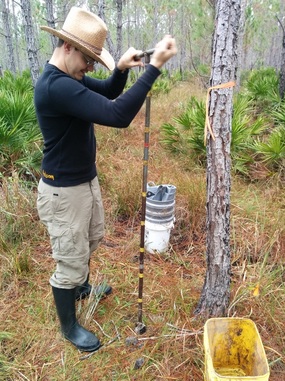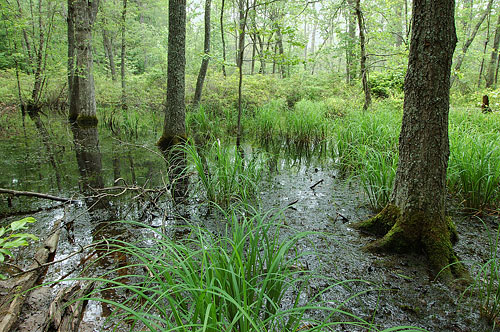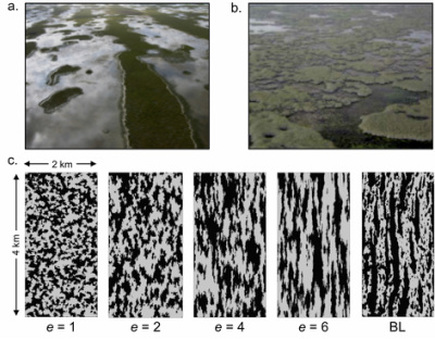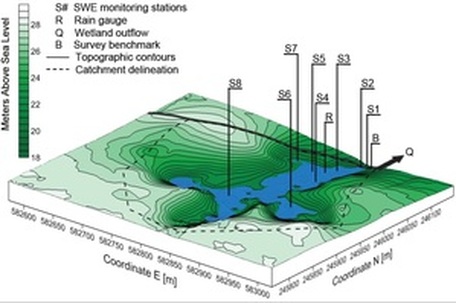Research in the Watershed Ecology Lab focuses on linkages among the hydrological cycle, ecosystem processes, and human activities, with the goal of developing new scientific knowledge and engineering tools to advance natural resources conservation and management. The lab works in three broad areas:
1. Hydrological, Ecological and Human Drivers of Coastal Change
2. Wetland, Riverine, and Forest Ecohydrology
3. Social-Ecological Effects of Dams and other Disturbances in the Amazon
2. Wetland, Riverine, and Forest Ecohydrology
3. Social-Ecological Effects of Dams and other Disturbances in the Amazon
Read on to learn about research being conducted by students, postdocs, & research scientists in the lab!
PLEASE EXCUSE THE DIGITAL DUST WHILE WE UPDATE THIS PAGE
Hydrological, Ecological, and Human Drivers of Coastal Change
|
Coastal regions are susceptible to sea-level rise, changing climate, and extreme water quality degradation driven by human activities. Research in the lab has advanced our understanding of the interactive effects of these stressors, with a focus on the role of freshwater and land-derived nutrients in maintaining coastal ecosystem health. Funding comes from the US Army Corps of Engineers, Florida Department of Environmental Protection, US Environmental Protection Agency, and United States Geological Survey.
|
Signs of a changing coastline: ghost forests in the Gulf of Mexico.
|
|
PhD student Yiyang 'Calvin' Kang is studying how mangrove ecosystems are adapting to a warming winter temperature regime and how poleward mangrove expansion impacts ecosystem structure and function. His field studies are quantifying mangrove structure across the Florida Gulf Coast along a winter temperature gradient. Preliminary results show that lower winter temperaturs are associated with a shift of dominant species from red mangrove (Rhizophora mangle) to a mix of black mangrove (Avicennia germinans) and marshes, along with a decrease in canopy height and aboveground biomass.
|
|
Water Quality in Coastal Watersheds and Estuaries: PhD student Nicholas Chin is researching watershed and estuary water quality using mechanistic and data-driven approaches. His current work is assessing if National Water Model streamflow forecasts can be used to simulate estuarine circulation and water quality, with a goal of forecasting Florida red tide (Karenia brevis) blooms in the Charlotte Harbor estuary. Nick plans to use machine learning and other data-driven techniques to study harmful algae blooms and better understand their causes.
|
Wetland, River, and Forest Ecohydrology
|
Hydrological processes affect a wide range of ecosystem functions and services. Increasingly, feedbacks among hydrological, ecological, and social processes are being identified, which can be critical in dictating system states. Research in the lab explores interactions between the hydrologic cycle and ecological function in wetland, riverine, and forest ecosystems, with a focus on how humans affect these coupled processes. Funding comes from the National Science Foundation, USDA, EPA, FDACS, FL WMDs, FL Water Resources Research Center, and the Alachua Conservation Trust.
|
Florida springs as a "Natural Laboratory" (after Odum 1957)
|
|
Wetland Hydrology and Restoration: PhD student Renee Price is investigating long-term hydrologic and vegetation trajectories of wetlands in central Florida. With a 40-year dataset, she aims to evaluate comparability of wetland hydrology across wetland types as well as determining the major drives of vulnerability, resiliency, and recovery for specific wetland types in response to withdrawals and passive restoration. Preliminary results suggest that wetland hydrologic regimes may not respond uniformly to withdrawal reductions, either within or across wetland types.
|
|
Connecting Wetland Carbon and Invasive Plants: Human disturbance can lead to the spread of non-native wetland plant populations, raising questions about how invasions affect wetland biogeochemistry. To better understand this interaction, PhD student Alexis Jackson is examining the physical, chemical, and biological processes by which invasive plants affect wetland carbon cycling. She is currently working with data from EPA's National Wetland Condition Assessment ( NWCA) data to assess carbon storage and invasive species coverage across the US.
|
|
Modeling Flow-Vegetation Interactions: PhD student Md Nurul Kadir is developing an integrated modeling framework to quantify interactions between submerged aquatic vegetation and riverine hydro-dynamics under different flow conditions. He is using field observations and experiments to model the system using a structural solver that incorporates soft-body dynamics and a finite element model, which will then be combined with a computational fluid dynamics model.
|
Social-Ecological Effects of Dams in the Amazon
|
The Amazon River watershed is the world’s largest river basin and provides >US$30 billion/yr in critical ecosystem services to local populations and humanity at large. The Amazon is also a relatively untapped source of “cheap”, low-carbon electricity for Latin America, and construction of >30 large hydroelectric dams and >170 small dams is currently underway in the Brazilian Amazon.
|
Changes in the Amazon’s freshwater ecosystems from the development of hydropower will have a cascade of physical, ecological, and social effects at local to global scales. Several projects in the lab seek to to improve our understanding of the effects of hydropower development on ecosystem services provided by the Amazon. Funding comes from the National Science Foundation and the University of Florida.
|
Dams and Hydrologic Change: MS student Kelsie Timpe demonstrated the extensive effects of hydroelectric dams in the Amazon region on hydrologic parameters calculated using the Indicators of Hydrologic Alteration (IHA) method applied to 33 small and large dams in the Brazilian Amazon. Her analysis provides the first holistic assessment of hydrological alterations caused by Amazonian dams and offers insight on the primary physical and management drivers of dam impacts.
|
Across all sites, results suggest that all ecologically important flow characteristics have been affected in dammed systems, but the most dramatic shifts were related to the frequency/duration and frequency/rate of change of pulse events. While each dam/river system are unique, some dams cause substantially greater hydrological alteration (HA, see figure below). Dam elevation and reservoir area were the best environmental predictors of HA. This study provides the basis for future interdisciplinary research to develop flow-ecology relationships needed to improve dam management in this mega-diverse region.
|
Interdisciplinary Research: A team of UF faculty from the Amazon Dams Network (ADN) was awarded the 2015 Water Institute Graduate Fellows (WIGF) Program to study the complex and interactive set of impacts brought about by the construction and operation of dams in the Amazon. The project brings together UF faculty from across the biophysical and social sciences (hydrology, fisheries, forest ecology, human health, human geography, and economics) and is led by Dr. Kaplan with co-PIs Stephanie Bohlman and Denis Valle, Kai Lorenzen, and Cynthia Simmons.
|
|
WIGF students include: Roberta de Carvalho and Alli Sabo (Geography), Jacy Hyde and Christine Swanson (School of Forest Resources and Economics), May Lehmensiek (School of Natural Resrouces and Environment), and my PhD student Trey Crouch (Environmental Engineering Sciences). Trey's research focuses on one of the most conspicuous dam impacts: sediment capture. Trey is investigating the effects of the Santo Antônio and Jirau dams on sediment transport in the Madeira River, which carries ~2.1 million tons of sediments per day. His research aims to develop tools to mitigate ecological impacts while maintaining electricity production.
|
|
Connecting Fish Catch and Hydrologic Change: Visiting scholar Alice Lima (PhD student at the Federal University of Rondônia, Brazil) worked with Dr. Kaplan to model fisheries production in the Madeira River. She found important hydrological controls on fish catch, but observed unique responses across the ten commercially important fish species, suggesting that dam operating rules need to closely mimic natural hydrologic regime in order to maintain the dynamics of these diverse ecosystems. Read the paper in Ecohydrology.
|
|
Amazon Dams Network: All the research described above builds on Dr. Kaplan's ongoing work with the Amazon Dams Network (ADN), an international, interdisciplinary group of researchers, students, and stakeholders studying the social-ecological effects of dams across the Amazon. Along with other faculty at the University of Florida (UF) and seven South American universities, Dr. Kaplan helps to lead the ADN. The group’s research and education outputs include interdisciplinary research proposals and manuscripts, integrative coursework, and seminars/workshops focused on interdisciplinary research and education.
|
Florida's Changing Springs: In many Florida’s springs, submerged aquatic vegetation (SAV) has declined in abundance while benthic and epiphytic algae cover have increased. Multiple factors are likely interacting to produce these observed shifts, but the causes remain unclear. To better understand these factors, PhD student Nathan Reaver is applying dynamical system modeling to spring ecosystems. We constrain and parameterize models through in situ measurements of hydrologic phenomena, including: SAV, algal, and flow velocity interactions; reach-scale hydrologic properties using hydrologic tracers; and large-scale flow velocity and primary producer structure correlations using novel remote sensing techniques. Beyond specific application to FL springs, we use springs as ideal "natural laboratories" to explore fundamental drivers of ecosystem trajectories, function, and structure.
|
Upland-Wetland Connections: The perceived benefits of forest management are often limited to upland habitat improvement, but management that reduces forest biomass (e.g., thinning and prescribed fire) may also increase regional water yield and improve wetland hydrology and habitats. To quantify these effects, PhD student Kevin Henson is studying how selective thinning and fire in upland pine change water level and hydroperiod in geographically isolated wetlands embedded within these forests. Lower upland biomass should lead to less upland water use and greater wetland water depth and hydroperiod following treatment. Kevin will also model how these changes affect endemic amphibians that rely on these wetlands. This study builds from previous work to quantify water yield as a function of management, forest structure, and ecosystem water use. Read that paper in the Journal of the American Water Resources Association.
|
|
Isolated Wetlands and "Significant" Nexus: Recent rulings by the U.S. Supreme Court have limited federal protection over isolated wetlands, requiring documentation of a “significant nexus” to a navigable water body to ensure federal jurisdiction. Despite geographic isolation, isolated wetlands influence surficial aquifer dynamics that regulate baseflow to surface water systems. To explore the importance of this function at the landscape scale, Dr. Kaplan and colleagues in the School of Forest Resources and Conservation and Virginia Tech integrated models of soil moisture, upland water table, and wetland stage to simulate the hydrology of a low-relief, depressional landscape. Read the paper in Water Resources Research.
|
|
Hydrologic Processes in Patterned Peatlands: Identifying the mechanisms that drive development of self-organized patterned landscapes is essential for guiding ecosystem management and restoration. In this work, Dr. Kaplan and colleagues in the School of Forest Resources and Conservation tested the hypothesis that feedbacks between patch anisotropy and hydroperiod may explain development of the flow- parallel ridge-slough mosaic of the Everglades (Florida, USA). Read the papers in Geophysical Research Letters, HESS, HESS, Water Resources Research, and Landscape Ecology.
|
|
Tropical Wetland Ecosystem Services: Rapid increases in population and growing food demand are causing widespread deterioration of tropical wetlands globally, and an increased focus on the role and function of these imperiled ecosystems is required. In this study, high-resolution, spatially distributed surface water and meteorological data were combined with a detailed topographical survey to quantify the wetland water balance, hydroperiod, and seasonal variability of wetland area, volume, and residence time. Read the papers in Wetlands and Wetlands Ecology and Management.
|
